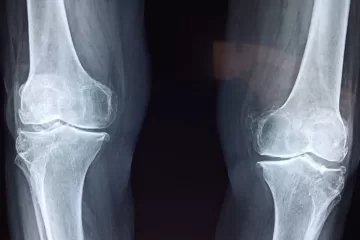PDA in Autistic Adults
Published by Tony Attwood on
PDA in Autistic Adults
The term PDA (pathological demand avoidance) was first used by Professor Elizabeth Newson in the 1980s. It is a behavioural profile associated with avoidance of complying with requests and extreme agitation if demands are escalated. PDA was first recognised in autistic children, and further research identified associated features such as high levels of anxiety, lability of mood and impulsivity, surface sociability but a lack of social identity and a greater level of interpersonal skills and social manipulation than usually associated with autism (Newson et al., 2003; O’Nions et al., 2014).
Terms
There is currently some debate about terminology, especially the word pathological with alternative terms such as EDA, or extreme demand avoidance (Gillberg, 2014), DAP or demand avoidance phenomena (Woods, 2019) and the term PDA being changed by autistic individuals and PDA support groups to ‘pervasive drive for autonomy.’ There is also academic and clinical debate regarding classification and whether PDA should be considered a separate subgroup within the autism spectrum or a learned coping mechanism for the combination of high anxiety, ADHD and impulsivity, procrastination and impaired executive functioning and the social and sensory characteristics of autism. For simplicity, we will use the term PDA for this blog.
Screening instruments for adults
Egan, Linenberg and O’Nions (2019) have created and evaluated the Extreme Demand Avoidance Questionnaire – Adult or EDA-QA. There are 25 items in the self-report questionnaire, and these are ten of those items.
- I am good at getting around others and making them do as I want
- I seek to quibble and change rules set by others
- I have a very rapidly changing mood
- I am driven by the need to be in charge
- I blame or target a particular person/persons
- I have difficulty complying with demands and requests from others unless they are carefully presented
- I obsessively resist and avoid ordinary demands and requests
- I ensure any social interaction is on my own terms
- I know what to do or say to upset particular people
- I am unaware or indifferent to the differences between myself and figures of authority
The instrument was found to be both reliable and valid, and that PDA traits were partially related to ASD traits. The authors encourage other researchers to utilise the questionnaire to conduct further research into adult PDA.
Characteristics of adult PDA
White et al. (2022) used two online surveys with adults in the general population to explore the importance of autistic traits and anxiety as predictors of demand avoidance. They found that autistic traits and anxiety were unique and equally important predictors of demand avoidance. The study confirmed that EDA is linked to autism, with avoidance behaviours being anxiety driven.
We know that autism is associated with high anxiety levels. However, during and after puberty, the levels of constant and episodic anxiety can be unbearable and not resolved with prescribed medication and cognitive behaviour therapy. An autistic adolescent or adult may then resort to extreme behaviours to manage extreme anxiety levels, which includes achieving, by whatever means is effective, control over their daily life to avoid experiencing anxiety. Simple requests can make an autistic person feel anxious, out of control and harassed. There is a phobia or fear of demands (postulophobia).
A coping mechanism is to delay responding until the level of anxiety has naturally reduced, or the person has achieved greater cognitive control of their anxiety. This can include delaying tactics such as procrastination, negotiation, excuses for non-compliance and compliments to the person making the request to distract them. This would be stage 1 of avoiding demands.
If stage 1 strategies are ineffective, the second stage is the flight response to anxiety which involves being obnoxious, rude, and disrespectful to the person making the request. This is designed to make the person making the request go away and ‘flee’ the situation. The third stage is ‘fight’, that is, having a verbal fight or argument and an emotional explosion or meltdown. The meltdown will discharge the build-up of anxious energy and be an emotional ‘reset’.
All these reactions to requests consolidate avoidance behavior’s using negative reinforcement (decreasing or removing a negative outcome, in this case, unbearable levels of anxiety). However, there is another aspect of the response to anxiety, and that is ‘freeze’. Sometimes it may not be a question of consciously choosing not to comply with the request but being physically unable to. It is not ‘won’t’ but ‘can’t.’ The person knows what to do, it may even be to do something they want to do or is in their best interests and for someone they love or admire, but they are experiencing autistic inertia and ‘freeze.’
We also recognise that extreme demand avoidance may have similar features to other maladaptive coping mechanisms for anxiety, such as eating disorders, situational mutism, and self-harm.
The development of PDA in the adult years
Avoiding demands can broaden through childhood to a wide range of everyday situations, and responses to simple requests that others may not perceive as a demand, such as ‘Can you please pass me the newspaper?’ The person with PDA perceives these requests, which require a simple and momentary response, as overwhelming, and anxiety-provoking. The lack of compliance and avoidance strategies will lead to considerable distress and conflict within the family. There is increasing recognition of the genetic aspects of PDA, with the characteristics being identified within and between generations which will add to the conflict at home.
Elizabeth Newson and her colleagues were able to follow up on 18 adults with PDA, and all remained demand avoidant, with eight to about the same degree as in childhood, three more than in childhood and seven less. Thus, there are a range of outcomes, but the characteristics of PDA have the potential to be life-long (Newson et al., 2003). It should be noted that the 18 participants in the study could not benefit from the degree of understanding and support for PDA that is currently available. Our clinical experience is that PDA traits can decrease as the child moves through adolescence into adulthood, with the time between demand and meltdown becoming longer and the degree of distress less and greater cognitive regulation of anxiety.
Over time, there can be increasing insight into the effects of PDA on relationships and employment and the acquisition of a range of strategies to manage extreme anxiety and attempts to modify reactions. There can be improvements in self-regulation, communication, and ability to self-advocate, and creating a lifestyle with minimum demands.
However, there can be concerns when alcohol and illegal and misuse of legal drugs are used to reduce extreme anxiety, and we have known clients with PDA who have also developed drug dependency to manage their anxiety.
Home life
There can be difficulty coping with self-imposed and societal demands, such as personal hygiene and maintaining friendships and relationships and a tendency to break the rules, which can lead to conflict with the law. Trying to manage extreme anxiety and suppress demand avoidance can be exhausting, effecting energy levels and potentially contributing to depression. There may be great reliance on parents or a partner for emotional support and practical support for impaired executive functioning. The PDA adult will also need regular downtime and solitude to restore energy, with benefits from having access to a demand-free space at home to retreat to.
Work-life
PDA characteristics can affect work life, with employers considering the person arrogant or undisciplined. There can be a disregard for authority and the work hierarchy, and it is often difficult for the person to work conventionally with their tendency to be ‘my way or no way’. There may be more success being self-employed or running their own business, so there are fewer issues with not feeling in control. There may be procrastination issues, difficulty completing projects and meeting deadlines, and responding appropriately to a line manager’s requests, such as being polite to customers. The PDA adult often feels trapped in a job and needs novelty. We have noted a history of many changes in employers and careers.
Strategies for PDA
Many strategies to cope with PDA in children will also apply to adults. This includes giving the person options and choices rather than directives. We also recommend using declarative rather than imperative language (Murphy, 2020), for example, instead of ‘You need to clean your mess in the bathroom’ (imperative) to ‘The bathroom needs to be clean and tidy’(declarative). Our experience is that declarative comments are more likely to achieve a positive response.
There can be consideration of distracting thoughts when initiating and completing a task, such as using role-play, for example, imagining being filmed doing the task for a documentary, or using mental games, or listening to a podcast to complete the activity on autopilot. These strategies may act as an effective thought blocker for anxiety.
We also recommend joining a PDA group on Facebook and online to seek support from those who share the same daily challenges.
References
Egan, Linenberg and O’Nions (2019). Journal of Autism and Developmental Disorders 49
Gillberg C. (2014). Commentary: PDA Journal of Child Psychology and Psychiatry, 55
Newson E, Le Maréchal K, & David C. (2003). Pathological demand avoidance syndrome: a necessary distinction within the pervasive developmental disorders Archives of Disease in Childhood; 88
O’Nions E, Christie P, Gould J, Viding E, Happé F (2014). Journal of Child Psychology and Psychiatry 55
White et al. (2022). Journal of Autism and Developmental Disorders 51
Woods R. (2019). Good Autism Practice 20
Resources
Books
Declarative Language Handbook (2020) Linda K. Murphy ISBN: 9781734516203
Being Julia: A Personal Account of Living with PDA (2021). By Ruth Fidler and Julia Daunt. Published by Jessica Kingsley Publishers.
PDA by PDAers: From Anxiety to Avoidance and Masking to Meltdowns (2019). Ed. Sally Cat. Published by Jessica Kingsley Publishers.
PDA Paradox; The Highs and Lows of My Life on a Little Known Part of the Autism Spectrum. (2019). By Harry Thompson. Published by Jessica Kingsley Publishers.


